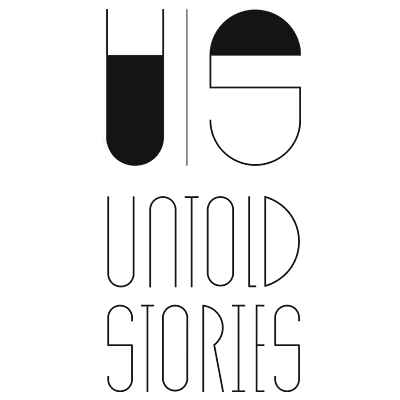What if we linger a moment with the loss we feel? With our personal and/or collective grief, the grief in our bodies, our political or climate grief?
What if we try to walk with it? Wherever we are, yet together?
Can we reach each other over different localities in a performative space, in a space of deep listening?
Can we, through grief, imagine a place to dwell in together?
These questions were central to the first part of the ‘year of listening’ that Dancing on the Edge festival had embarked on from September 2022 till June 2023, which I had the great pleasure of co-creating as an artist and curator. Dancing on the Edge is a platform for performing arts based in The Netherlands. It works cross culturally, building bridges between the Netherlands/Europe and West Asia & North Africa since 2006.
Through the writing of six artists that were part of the ‘year of listening’, this dossier will reflect on these questions, and on the ways a cultural platform could work and produce in times of uncertainty and crisis.
After the pandemic and in the reality of the climate catastrophe, global wars and migration crises, Dancing on the Edge made a radical choice to shift the way it works from production and consumption to listening and rooting. Listening to what matters to us as a team, to our network of artists and audience, to unheard voices, and through that enforcing webs of collaboration and solidarity. We slowed down and tried to follow the natural rhythms of nature, taking a year to dive into four themes: Grief, Birth and Death, Seeds and Togetherness. Together with a number of artists, we designed four public moments throughout this year timed around the equinoxes and the solstices.
This ‘year of listening’ was like a pilgrimage to us, and audiences from different parts of the world joined our public programs of audio walks, artistic research, physical workshops and performances that happened online and locally in four different cities: Amsterdam, Palermo, Cairo, and Beirut. We did not fly in artists nor extracted practices from their context. We collaborated with local platforms and practices in the region we usually work with, and explored forms that could allow us to experience these practices in spite of the distance.
The first moment, Walking with Grief, unfolded as a collective performance where the public joined our walks over a week, wherever they were in the world, placing their bodies into a web of walkers, tracing our entangled geographies and realities. Each day, a different recording, in four different languages, was sent to us to listen to while walking. Each one was a proposal by a different artist to listen to. Walking is part of the practice of these artists, a form through which they reflect on their position and relationships to the worlds they dwell in and walk through and walk with. Each evening we held a multilingual intimate online listening space, for sharing and for stitching collective narratives together.
In times of brokenness, our pilgrimage was in search for the commons, an ecological cultural practice, solidarity, decentralized visions and relations, and a place to dwell together- with you.
Much remains Untold when it comes to grief, and much feels unheard as we walk and connect to everything by our side. For this dossier, I revisited these recordings and invited four of the artists to re-work their recordings into written texts to share here with you. Additionally, I invited the artist Giath Taha to write a new text, while I wrote one myself.
In Keys to Ancient Grief, Zeinab Charafeddine takes us on a walk along paths interwoven between her inner landscapes of grief and the outer natural landscapes of transformation, in the village she has taken refuge in due to the economic and political crisis in Lebanon. A sensorial journey of mourning and healing.
Giath Taha invites us to a very delicate and intimate ritual in My body is a Pine Tree, where he sheds off his multiple bodies, mourns his multiple deaths and welcomes his rebirth as a pine tree. We accelerate and slow down, walking with him between memory and forgetfulness. A pressing question echoes through: Do we exist through our memories, and what remains of us if we would forget?
In Memory Landscape, I depart from the act of walking in someone else’s shoes, experiencing how through an other, we could access imaginary and real landscapes of memory, grief and desire. I follow my embodied memory and that of the landscape, attuning to what is stored in my back, belly, hands, and knees as much as what resides in the soil, stone, wood, plants etc.. I am flooded with images. Where does trauma reside? And does nature know grief?
What changes when we walk in different cultural and political contexts? Which (un)privilege do certain bodies have to walk and wander? Dina Mohamed departs from her own embodied experience to explore these questions in The Body Keeps the Score. She listens to how grief had physically transformed her bones and muscles, and thus her walking posture and the experience of walking itself.
Walking in Beirut, the plants disclose their knowledge and complex histories of colonialism and migration to Christian Sleiman, shifting his perception of the city. Sleiman walks to forage, and in his text A Beirut Forager’s Odyssey, he introduces foraging as a political act of reclaiming the city. He draws with his body and senses a route between the countryside where he grew up and learnt foraging and the city where he is living and working.
Ian Nesbitt shares with us his intimate encounters with a few plants and people along his pilgrimage route. In Pilgrims Notes: Renewal, these encounters seem like gifts or deep insights that guide him with questions he has about his human power position and perspective in relation to nature, and about grief, entanglement and care. As he walks, he wonders what visions of an alternative future appear through these encounters and how we can renew the ways we relate to and inhabit the world around us.
We invite you to walk with our grief, your grief, through these writings. Our societies have organized themselves to avoid grief or to demand from those grieving to do it fast and in private, in ways that would not disrupt the productivity standards, or require any forms of systematic care.
Dancing on the Edge believes that staying with grief is a form of resistance, a way to insist on attending to the brokenness of this world, of our bodies, souls and minds, and a way to imagine alternative futures and have fair generative cultural practices.
Let us continue walking, for it is with this seemingly simple act of displacement, that communities, habitats, cultures were born. And it would take a lot of walking to unlearn and renew the stagnating concepts of identity, borders, time, gender, human/non-human, and nature that we embody and confirm.








